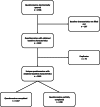Assessing knowledge and skills of maternity care professionals regarding neonatal hyperbilirubinaemia: a nationwide survey
- PMID: 33468082
- PMCID: PMC7814718
- DOI: 10.1186/s12884-020-03463-0
Assessing knowledge and skills of maternity care professionals regarding neonatal hyperbilirubinaemia: a nationwide survey
Abstract
Background: Neonatal hyperbilirubinaemia is a physiologic phenomenon, but, when severe, may cause lifelong disability. Maternity care assistants (MCAs) play an important role in timely recognition of severe neonatal jaundice. We assessed knowledge and skills of MCAs regarding neonatal hyperbilirubinaemia.
Methods: All Dutch MCAs (n = 9065) were invited to fill out a questionnaire assessing knowledge, expertise, and handling of neonatal jaundice. Additionally, we developed an e-learning and provided training sessions to a subgroup of MCAs (n = 99), and assessed their knowledge on neonatal hyperbilirubinaemia before and after the training.
Results: One thousand four hundred sixty-five unique online questionnaires were completed (response 16.2%). The median number of correctly answered knowledge questions was 5 (out of six; IQR 1). Knowledge was significantly better when respondents had had in-service training on neonatal hyperbilirubinaemia in the previous year (p = 0.024). Although 82% of respondents felt highly skilled or skilled to assess jaundice, accuracy of estimation of total serum bilirubin levels by assessing skin colour was generally poor and prone to underestimation. Among participants attending a training session, those who completed the e-learning beforehand had higher pre-training scores (5 (IQR 1) vs. 4 (IQR 2); p < 0.001). The median post-training score was higher than pre-training (6 (IQR 1) vs. 5 (IQR 2); p < 0.001).
Conclusions: Background knowledge of MCAs regarding neonatal hyperbilirubinaemia was adequate, but can be improved by further training. Estimation of total serum bilirubin levels based on skin colour was often inadequate. Approaches to improve timely recognition of jaundiced neonates are needed.
Keywords: Experience; Expertise; Knowledge; Maternity care assistants; Maternity care professionals; Neonatal hyperbilirubinaemia; Neonatal jaundice; Recognition; Skills.
Conflict of interest statement
The authors declare that they have no competing interests.
Figures







Similar articles
-
Assessment, management, and incidence of neonatal jaundice in healthy neonates cared for in primary care: a prospective cohort study.Sci Rep. 2022 Aug 23;12(1):14385. doi: 10.1038/s41598-022-17933-2. Sci Rep. 2022. PMID: 35999237 Free PMC article. Clinical Trial.
-
Screening and treatment to reduce severe hyperbilirubinaemia in infants in primary care (STARSHIP): a factorial stepped-wedge cluster randomised controlled trial protocol.BMJ Open. 2019 Apr 20;9(4):e028270. doi: 10.1136/bmjopen-2018-028270. BMJ Open. 2019. PMID: 31005942 Free PMC article. Clinical Trial.
-
Severe neonatal hyperbilirubinaemia: lessons learnt from a national perinatal audit.Arch Dis Child Fetal Neonatal Ed. 2022 Sep;107(5):527-532. doi: 10.1136/archdischild-2021-322891. Epub 2022 Jan 28. Arch Dis Child Fetal Neonatal Ed. 2022. PMID: 35091450
-
Cochrane Review: Prophylactic phototherapy for preventing jaundice in preterm or low birth weight infants.Evid Based Child Health. 2013 Jan;8(1):204-49. doi: 10.1002/ebch.1898. Evid Based Child Health. 2013. PMID: 23878128 Review.
-
An evidence-based view on hyperbilirubinaemia.Acta Paediatr. 2012 Apr;101(464):3-10. doi: 10.1111/j.1651-2227.2011.02544.x. Acta Paediatr. 2012. PMID: 22404885 Review.
Cited by
-
Home phototherapy for neonatal hyperbilirubinemia: current practices and attitudes.Pediatr Res. 2024 Dec 13. doi: 10.1038/s41390-024-03754-8. Online ahead of print. Pediatr Res. 2024. PMID: 39672825
-
Assessment, management, and incidence of neonatal jaundice in healthy neonates cared for in primary care: a prospective cohort study.Sci Rep. 2022 Aug 23;12(1):14385. doi: 10.1038/s41598-022-17933-2. Sci Rep. 2022. PMID: 35999237 Free PMC article. Clinical Trial.
References
-
- National Collaborating Centre for Women’s and Children's Health. Neonatal jaundice: National Institute for Health and Clinical Excellence; 2010. Available from: https://www.ncbi.nlm.nih.gov/pubmedhealth/PMH0016565/pdf/PubMedHealth_PM....
-
- Le Pichon JB, Riordan SM, Watchko J, Shapiro SM. The neurological sequelae of neonatal hyperbilirubinemia: definitions, diagnosis and treatment of the kernicterus spectrum disorders (KSDs) Curr Pediatr Rev. 2017;13(3):199–209. - PubMed
MeSH terms
Grants and funding
LinkOut - more resources
Full Text Sources
Other Literature Sources

